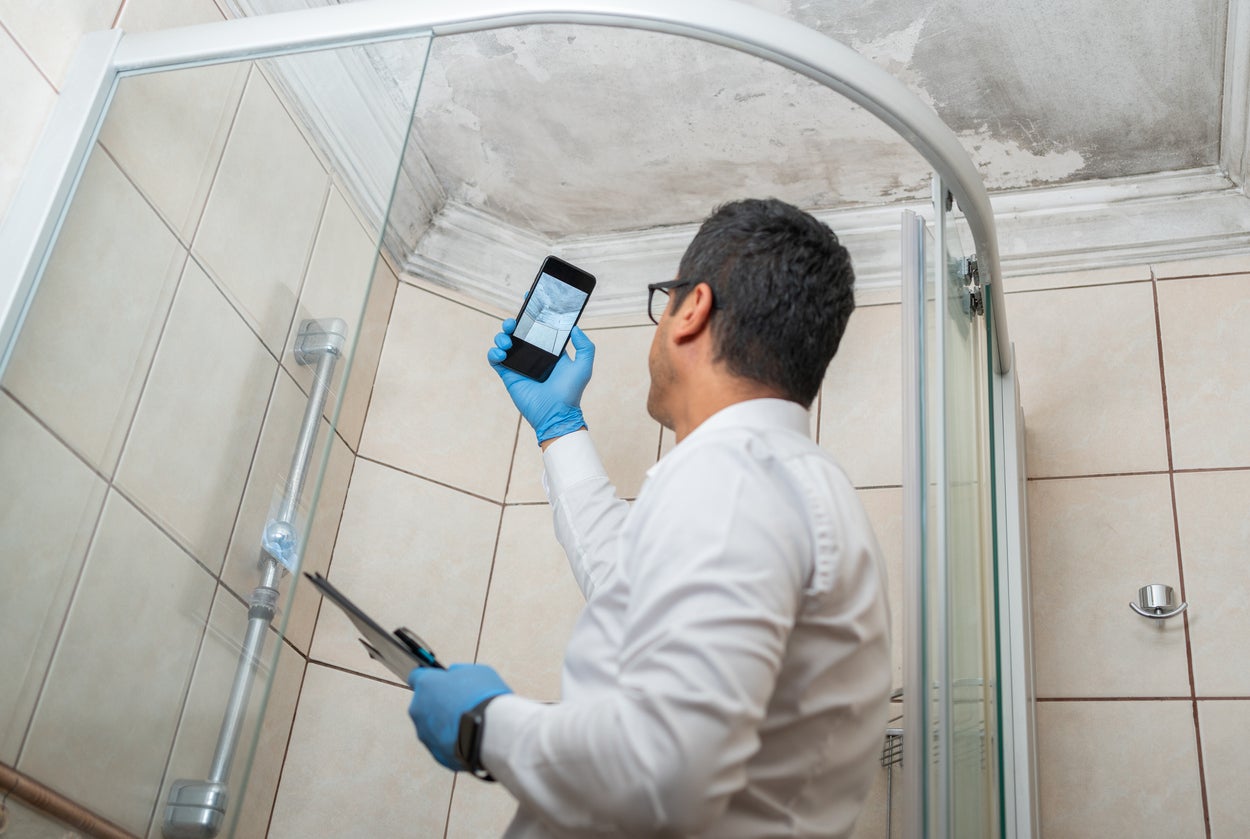Ensuring Post Remediation Verification Accuracy
Ensuring Post Remediation Verification Accuracy
Blog Article
Professional Tips for Article Mold And Mildew Remediation Success
In the world of mold removal, effectively getting rid of mold and mildew is just half the fight; real challenge depends on preventing its reappearance. Post-remediation initiatives play a vital duty in making certain a mold-free environment in the long-term. By adhering to skilled suggestions and finest practices, people can secure their spaces against mold resurgence and maintain a healthy indoor environment. It remains in this phase of the remediation procedure that interest to information and positive actions genuinely make a difference.
Display Humidity Degrees Consistently
After finishing mold removal treatments, preserving ideal moisture degrees is crucial to protect against mold re-growth and guarantee a healthy interior atmosphere. High moisture degrees over 60% create a conducive setting for mold to flourish, making regular keeping track of an aggressive measure to avoid any future mold concerns.
Additionally, establishing a routine timetable for humidity checks, specifically in risky locations such as cooking areas, cellars, and bathrooms, is an aggressive strategy to mold prevention. By constantly keeping an eye on humidity degrees, property owners can effectively minimize the danger of mold and mildew reoccurrence and preserve a healthy and balanced indoor atmosphere post-remediation.
Conduct Thorough Inspections Post-Remediation
Adhering to the completion of mold removal procedures, it is critical to perform extensive inspections to confirm the efficiency of the removal procedure. These post-remediation examinations are critical in making sure that the mold and mildew problem has actually been efficiently addressed which there is no reoccurrence or staying mold and mildew development. Inspections should be executed by qualified specialists who have expertise in determining mold and examining interior air top quality.
During these evaluations, various approaches such as aesthetic analyses, air sampling, and surface tasting might be used to completely review the remediated areas. Aesthetic analyses entail an in-depth inspection of the premises to look for any type of noticeable signs of mold growth or water damage. Air sampling assists in figuring out the air-borne mold spore levels, while surface area tasting can spot mold particles on surface areas.
Implement Proper Ventilation Approaches
After making certain the efficiency of the mold remediation process via comprehensive inspections, the following vital step is to focus on executing appropriate air flow strategies. Ample ventilation is important in preventing mold reoccurrence by managing dampness degrees and advertising air circulation.
Proper ventilation not only help in preventing mold and mildew development however additionally adds to the general health and comfort of occupants. By making certain adequate air flow throughout the residential or commercial property, you can decrease the danger of mold and mildew regrowth and develop a much healthier living environment. Normal upkeep of ventilation systems, including cleansing and filter substitutes, is important to maintaining efficient ventilation. Consulting with HVAC experts can supply further insights into enhancing ventilation methods for your certain property demands.

Usage Mold-Resistant Materials for Fixes
To improve the long-term effectiveness of mold remediation initiatives, integrating mold-resistant materials for After mold remediation repair services is essential in alleviating the danger of future mold and mildew growth. Mold-resistant materials are developed to hold up against moisture and inhibit mold and mildew growth, making them an essential selection for locations susceptible to dampness and moisture. When fixing areas affected by mold and mildew, utilizing materials such as mold-resistant drywall, mold-resistant paints, and mold-resistant caulking can help avoid mold reappearance.
Mold-resistant drywall is a superb option to standard drywall in locations like restrooms and basements where wetness levels are greater. When subjected to damp conditions, this type of drywall has an unique finishing that withstands mold growth even. In addition, utilizing mold-resistant paints having antimicrobial agents can better hinder mold development on wall surfaces and ceilings.
In locations where moisture is typical, such as washrooms and kitchen areas, using mold-resistant caulking around bathtubs, home windows, and sinks can aid secure out water and protect against mold from holding in splits and crevices. By purchasing these mold-resistant products throughout fixings post-remediation, you can substantially minimize the likelihood of future mold and mildew concerns and preserve a healthier indoor setting.
Maintain Tidiness and Address Water Issues
After mold remediation, it is critical to keep a tidy environment to prevent the regrowth of mold and mildew. Leaks, water invasion, or high moisture degrees can develop the perfect reproduction ground for mold, so it is vital to deal with any kind of water-related problems instantly.
To keep tidiness, think about using HEPA filters in vacuum cleaners and air cleansers to catch mold spores and stop their flow in the air. Making sure appropriate ventilation in areas prone to moisture buildup, such as cooking areas and washrooms, can assist keep humidity levels in check. By staying watchful about cleanliness and resolving water issues immediately, you can properly prevent mold and mildew reinfestation and preserve a healthy and balanced indoor setting.
Final Thought

In the world of mold and mildew removal, efficiently eliminating mold is only half the fight; the true obstacle exists in preventing its reappearance. After completing mold remediation treatments, maintaining ideal moisture degrees is essential to protect against mold and mildew re-growth and ensure a healthy indoor atmosphere. High humidity degrees above 60% create a helpful setting for mold to prosper, making normal checking an aggressive measure to stop any type of future mold issues.
To enhance the long-term performance of mold removal initiatives, including mold-resistant products for repair work is critical in mitigating the risk of future mold development. After mold and mildew remediation, it is vital to keep a tidy atmosphere to stop the regrowth of mold.
Report this page